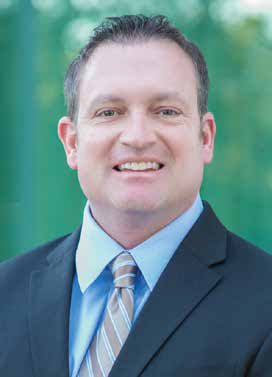SHOULD AV PARTNER WITH IT, OR DEVELOP TALENT IN-HOUSE?



From left: Brian Suerth, president of the San Diego, CA-based Technology Assurance Group (TAG); Christopher Maione, president of AV consultancy Christopher Maione Associates; Max Kopsho, director of training and strategic business development at SVSi. While the term “AV/IT convergence” may be passé, the challenge AV systems integrators face in recruiting IT-focused talent remains current. The question: for those AV integrators that don’t have the resources to grow IT expertise in-house, is establishing partnerships with IT firms a viable solution?
Christopher Maione, president of Christopher Maione Associates, a business consultancy specializing in the AV industry based in Northport, NY, doesn’t believe so. He argues that over the last few years, IT companies—especially those deploying cabling infrastructures—have expanded into areas such as video systems installation, eliminating the need for clients to source out A V systems integrators. “It started with simple hang ‘n’ bangs—whether it be video projectors or flatpanels—and one thing led to another,” he said. “Next, there’s a conference room down the hall. Next, there are five conference rooms.” In expanding their reach this way, IT companies don’t need to partner with AV integrators for that matter, either.
But Max Kopsho, director of training and strategic business development at SVSi, an AV distribution products manufacturer headquartered in Huntsville, AL, believes otherwise. Kopsho, who worked in IT before building a career in AV, recounts that not only do IT professionals not know enough about audiovisual systems to integrate them properly, they also have enough on their plate already. “IT as a whole—even resellers—aren’t looking for yet one more thing to do,” he said. “They are not looking to learn about how to do acoustic treatments, how to manage ambient light, and all that stuff. They have way too many responsibilities already.” Where AV integrators lose business to IT companies is when they don’t promote the value they bring to the table; value, Kopsho emphasizes, that is mission critical. “If I’m presenting to five or 10 people, I’m completely dependent on the audiovisual systems to get my point across. Then that should be considered a mission critical element of the business, and it should be assigned priority as such.”
Brian Suerth, president of the San Diego, CA-based Technology Assurance Group (TAG), an organization with members working in IT, telecommunications, AV, surveillance, video and telepresence, and managed print, advocates AV/IT partnerships in the form of third-party outsource contracts. “If you have a strong senior technician that can almost be a CIO or CTO in your organization, that person can manage these third-party relationships, and as you grow, you can start adding some technicians internally, but the bulk of the work can be outsourced to other entities,” he explained. “That third-party outsource will have the technology that proactively monitors servers—whether they’re in the cloud or on premise—and they will proactively monitor PCs, laptops, tablets, all of those devices, to ensure that everything is working properly.” He noted that this approach enables AV integrators to truly offer managed services without having to do a lot of prospecting—at least not at first. “They don’t need to go out and prospect for new business; their business is waiting for them within their own client base. That’s where the opportunity lies, because they have a captive audience that they can now go and deliver managed services to.”
Kopsho urges AV integrators to seek out likeminded IT integration firms that offer LAN and WAN system design and support, as well as on-site maintenance and troubleshooting, as potential partners. He also encourages AV integrators to align themselves with companies that provide 24/7 monitoring and/ or service-level agreements. “[Service-level agreements] is a model that the AV industry neglected and should have gone into early on in the process, but now is our chance. We can leverage a partner who knows how to do it well, and we can seek out ways in which we can work with them and increase the service-level agreement to include the audiovisual side of it as well.” All of this, of course, requires a well-defined contract declaring who owns what part of the system, and therefore, who is compensated for what.

While Kopsho is pro-partnerships, he does warn against several pitfalls; namely overestimating the competencies of each firm. “They’ll both say: the synergy of what we’re building together means that it’s greater than the two, so let’s say that we can do this and let’s say that we can do that [when we’re not really set up to do it],” he illustrated. At the same time, he warned, don’t play down your combined competencies, either. “You can also go to the other end of that spectrum and underestimate your value in that partnership equation, and in the way, you relay it to a customer.”
Kopsho also counsels partners to be transparent with one another. “There can be a level of paranoia, we’ll call it, which creates a level of overprotectiveness of the information that you have,” he said. For example, an AV integrator may not want to share their sales techniques with their IT partner, which could result in losing potential business just because the lines of communication are restricted. Once again, a clearly defined contract should provide the protection of ensuring that both companies aren’t stealing each other’s business. This also goes hand-in-hand with commitment: you only get out of these partnerships what you put into them. “[When I hear,] ‘It failed because we didn’t make a lot of money at it,’ that’s probably because you really didn’t commit and assign resources to making it a success, and therefore it’s not going to happen because you originally started off thinking that it’s not going to happen.”
What makes AV/IT partnerships so powerful, Kopsho argues, is that they offer the potential to expand the sales forces of both parties. “You actually have an IT firm out there selling your AV resources, and you’re making more money, and then in the same turn, your AV staff becomes a little bit more IT-centric, and they’re out there selling somebody else’s services, which your company gets a cut of,” he illustrated. And, if the partnership is really successful, both companies can work together to generate entirely new business. “You get the results of them better serving their customers because they’re going to provide AV support, you’re better serving your customers because you’re going to provide IT support, and then you have the ability to seek out a whole new customer base because of your combined efforts, and that’s where the huge win should be. It’s not just about keeping your head above water, and keeping the IT guy from taking over your business. It should be sought out as a business opportunity that allows people to grow both of the entities’ business and customer bases.”
Carolyn Heinze (http://carolynsclips.wordpress.com) is a freelance writer/editor.
AV, IT, Security: The New Convergence?
Christopher Maione, president of Christopher Maione Associates, believes that the AV/IT question now covers three technology groups: audiovisual, information technology, and security. He argues that security technology––which not only covers access control, but video systems as well––offers AV integrators an edge in projects. “It’s a little less of a commodity than just pulling Cat-6 cable everywhere, and it requires a certain level of systems integration expertise,” he said. AV, IT, and security, he said, offer the potential to converge into one multidisciplinary package. “We’re seeing large-scale projects being bid out to single integrators, or they’re breaking the package up and going to one, two, or three integrators. But I think it’s the smart integrator that can take that package from the construction manager and say, ‘I can give you a price for all three.’”
––C.H.










